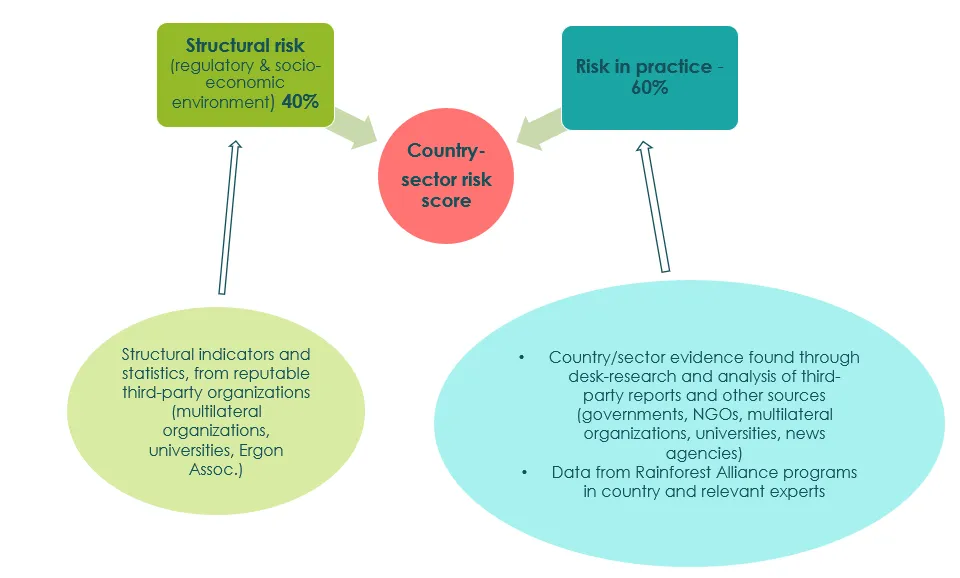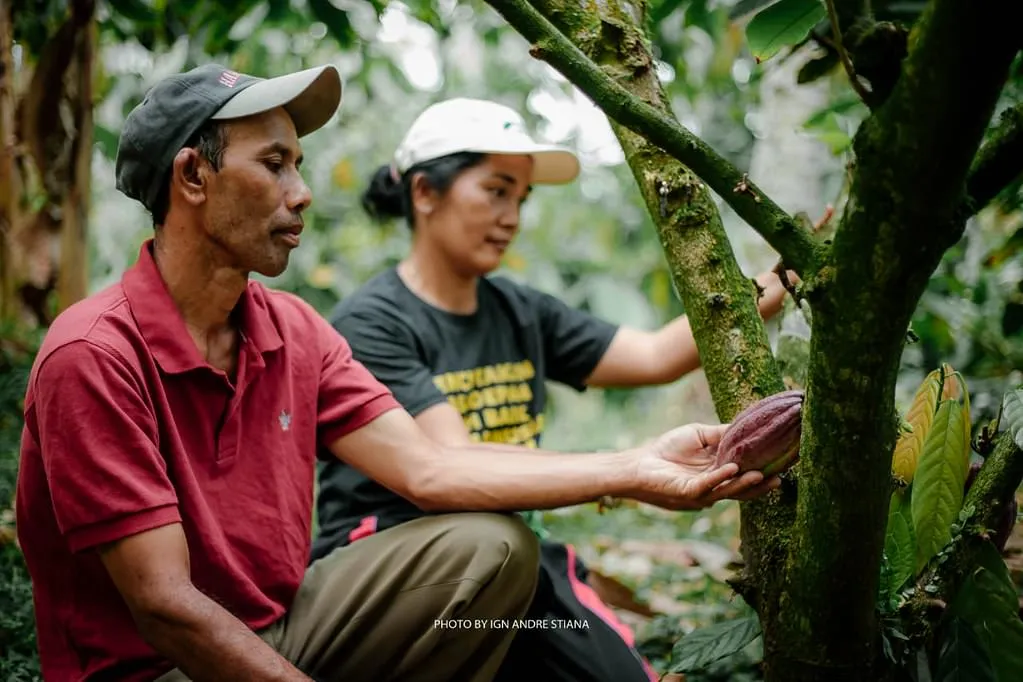Consumers and companies are more engaged than ever in identifying the risks of human rights abuses in global supply chains, including child labor and forced labor. Companies are tackling this challenge through human rights due diligence (take JDE’s corporate responsibility report, for example). These efforts include mapping their supply chains, assessing their risks, mitigating risks through engagement with suppliers, monitoring their supply chains, and investing in prevention, as well as remediation, when cases are found.
Rigorous human rights standards
The Rainforest Alliance Certification Program is an important tool to help companies support their implementation of human rights due diligence. The certified farmers and buyers in our program are all pursuing complementary goals. Farming families want their children to be safe and educated. Agricultural workers want to earn a fair wage and work in safe conditions free from exploitation. Farmers want to produce sustainably so they can sell their produce at a higher price. And companies seek assurance that their business partners respect human rights and follow labor laws that reduce the risk of child labor and forced labor occurring in their supply chains. This is why our 2020 Sustainable Agricultural Standard sets rigorous requirements on human rights.
Furthermore, we take a risk-based approach to help companies in their efforts. Our approach aligns with international frameworks including the International Labor Organization conventions, the UN Guiding Principles on Business and Human Rights, the OECD Guidelines for Multinational Enterprises.
Evidence shows that some countries and sectors have higher risks of human rights violations like child labor and forced labor. So, we have tailored the implementation and verification of our standard requirements to the risk exposure of each farm. This means that we expect farms in a high-risk location or sector to pay extra attention to identifying and addressing these issues. Additionally, auditors pay extra attention to checking that appropriate measures are in place to do this.
Mapping the risks
The Rainforest Alliance Child Labor and Forced Labor Sector Risk Maps are a key component of our risk-based approach. We began developing the methodology in 2019, together with human rights consultancy Ergon Associates, and received extensive input from our field teams and child and forced labor experts. The risk maps are based on key indicators of potential incidence of child labor and forced labor. These indicators are drawn from indices—most of which are publicly available—and the Rainforest Alliance’s own research. It is important to note that the risk ratings indicate the likelihood of child labor or forced labor cases, they are not reflective of actual occurrences.
Calculating the risk scores
In short, we calculate the risk score at country level based on:
- “Structural” factors derived from national data on the regulatory and socio-economic environment. We use international indices from the World Bank, United Nations, and other internationally recognized sources. These account for 40% of the risk score.
- “Risks in practice,” a set of indicators specific to the sector in question in each country. These indicators are based on research reports from governments, NGOs, multilateral organizations, universities, news agencies, and the Rainforest Alliance’s own data. These account for 60% of the risk score.
We present the risk levels by country and commodity, starting with our four priority sectors: coffee, tea, cocoa, and bananas. It’s important to note that country and commodity sector analysis is based on national-level data. It indicates a general level of risk for the whole country, as opposed to an exact risk level for any specific farm. However, if a country and sector have a low risk designation, this does not mean zero cases of child labor or forced labor occur there. It merely means that the structural and inherent risks are low. The diagram below illustrates how we use the different inputs to determine the country risk score. We described the full methodology in our Guidance Briefing and Method Note.

For each country and sector combination, we categorize the risk of child labor or forced labor into three risk levels: low, medium, and high. These levels are based on a numeric score from 0 to 10. Scores in the bottom third (i.e. below 3.3) indicate low risk. Those in the middle (between 3.3 and 6.7) indicate medium risk. And those in the top third (above 6.7) indicate a high risk level. You can see the full risk score calculations in our data sheet.
Using risk scores to inform action
Using the risk maps for farms
In countries and sectors that the risk maps designate as medium or high risk, farms must take additional actions to identify and mitigate those risks. They must implement more robust monitoring, and apply stronger mitigation actions when risks are identified on the farm through the Farm Risk Assessment Tool. Some examples of mitigation tactics are determining the reasons why children aren’t going to school or working more closely with labor providers on labor rights commitments. The Rainforest Alliance provides guidance to certificate holders on how to implement these processes.
Subsequently, mandatory improvement requirements will become applicable over time for farms operating in medium or high-risk countries and sectors. For instance, farms and groups that operate in areas with these risk levels must ensure all group members and workers receive training on child labor and forced labor. As part of our certification program, they must also actively encourage the education of every child living on group members’ farms.
Additionally, Certification Bodies (CB) that perform Rainforest Alliance audits must take into account the risk map scores. For countries and sectors designated as high risk, the CB must take additional steps in its audit. For example, conducting more worker interviews or investing more time in auditing these issues.
Using the risk maps for companies
Risk maps are an important tool to inform human rights due diligence processes for companies. A higher risk does not mean companies should not source from a particular country or sector. It is an indication that active measures must be put in place to ensure robust due diligence processes in these areas. Buying Rainforest Alliance Certified products is one way for companies to mitigate the risks.
Overall, the Child Labor and Forced Labor Sector Risk Maps are part of our improved assurance system. We believe that the risk-based system and auditing requirements will make our certification system more tailored to local contexts, and as such, more efficient and effective.
We welcome your feedback or additional information. You can send your input to CustomerSuccess@ra.org.
Interested to hear more? We hosted an introduction webinar about the Child Labor and Forced Labor Risk Maps on June 9, 2021. Watch the recording here.
Note: These risk maps present risks at a country level, and not on a sub-national or individual producer level. They rely in part on data provided by third parties and is subject to further revision and refinement. The purpose of these risk maps is to adapt mitigation actions to risk context and to adapt requirements and assurance activities based on risk levels. They are not designed to indicate the presence or absence of the indicated issues in a country, to make sourcing decisions, or for any other purpose.
These documents and their contents are by the Rainforest Alliance and they are licensed under https://creativecommons.org/licenses/by-nc-sa/4.0.




